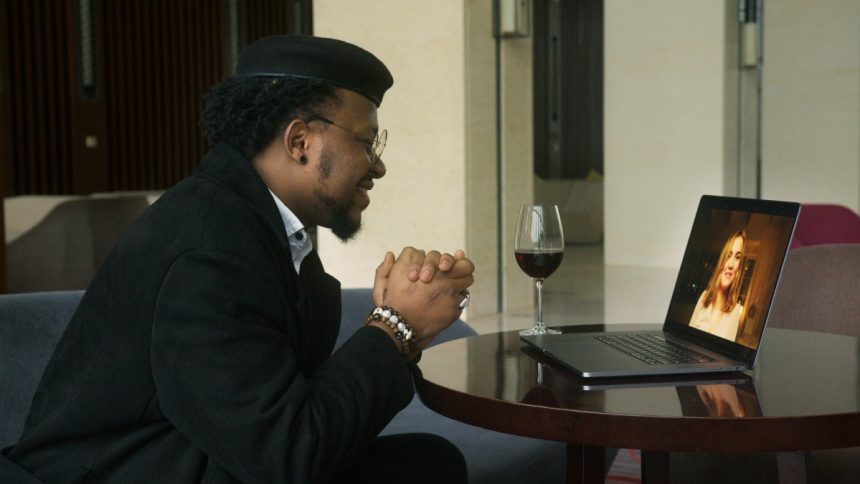Technology has transformed nearly every aspect of human life, including how we build and maintain romantic relationships. From the first glance at a potential match to how we keep the spark alive, technology has redefined the landscape of love and connection. It has changed the way we communicate, meet new people, and sustain our relationships over time. Whether it’s for better or worse, the impact of technology on modern relationships is undeniable.
This article will explore the role technology plays in shaping these relationships, touching on both the positives and negatives.
1. The Impact on Communication
Remember how people who were far apart once wrote letters and, later, emails to each other? Now, text messages, video calls, and instant messaging apps have made it possible to engage in long conversations and share moments no matter the distance. Partners can stay in touch throughout the day, share updates, and express affection instantly. This ability to maintain constant communication can strengthen bonds and provide a sense of security, especially for those who are separated by distance.
However, digital communication comes with its challenges. For instance, relying too much on digital interaction can also reduce the quality of face-to-face communication. Therefore, couples must strike a balance between digital and in-person communication to maintain healthy, fulfilling relationships.
2. The Rise of Dating Apps
Dating apps have dramatically changed how people meet and connect. In the past, meeting someone new often meant attending social events or relying on friends for introductions. Now, with a simple download and a few swipes, people can connect with potential partners from around the world! The convenience offered by dating apps has opened doors for people who may otherwise struggle to find compatible partners in their everyday lives.
Moreover, the development of dating apps has become a booming industry. Top dating app development companies are focused on enhancing user experience by integrating advanced algorithms, AI matchmaking, and user-friendly interfaces. These innovations are aimed at making connections more authentic and aligning user preferences to create better matches.
3. The Influence of Social Media
Social media has transformed how couples present themselves and perceive their relationships. Platforms like Instagram and Facebook allow couples to share highlights and celebrate their relationship publicly. While this can build positive reinforcement and affirm commitment, it can also introduce challenges. Constantly comparing one’s relationship to the curated highlights of others can create feelings of inadequacy and dissatisfaction.
On the other hand, social media can foster closeness by giving partners a way to engage with each other’s interests and support one another’s achievements. The key is using social media mindfully and avoiding pitfalls like oversharing or basing self-worth on external validation.
4. Tech-Induced Relationship Stress
The constant connectivity that technology enables can sometimes have a negative impact on relationships. Notifications, work emails, and endless scrolling can take attention away from quality time with a partner. When one or both partners are preoccupied with their devices, meaningful interactions can suffer. This digital distraction has become one of the most common sources of conflict in modern relationships.
Addressing this requires clear boundaries and open communication. Couples can benefit from setting technology-free times, such as during meals or before bed, to ensure uninterrupted time together. By prioritizing face-to-face connection and managing screen time, partners can reduce tech-induced stress and focus on nurturing their relationship.
5. Enhancing Intimacy through Apps and Devices
Technology hasn’t just been a game-changer for people who want to find partners; it also offers unique ways for existing couples to maintain and even enhance intimacy. Apps specifically designed for couples, such as those that send prompts for date nights or reminders to share affectionate messages, can be quite helpful in strengthening the relationship. Other tech tools include shared calendars that help partners plan their time together despite busy schedules. These digital aids can spark spontaneous moments of connection and keep the relationship lively and engaging.
6. Navigating Digital Privacy
Technology has brought new questions about trust and digital privacy. Sharing passwords, monitoring each other’s social media, or tracking locations can foster transparency, but these practices can also breed insecurity and mistrust if not managed carefully. Some couples feel comfortable sharing devices and access, while others see it as an invasion of personal space.
Digital privacy in relationships requires a foundation of trust. Partners should have open discussions about their comfort levels regarding the sharing of digital access and be mindful of respecting each other’s boundaries. By acknowledging each other’s needs for personal space while balancing transparency, couples can create a healthy approach to navigating digital privacy.
7. Managing Online Presence as a Couple
An online presence as a couple comes with its own set of challenges and expectations. Sharing pictures, posting relationship updates, and publicly interacting online can create a positive sense of community. However, it can also set the stage for pressure to present a “perfect” relationship, adding stress and unrealistic expectations.
Managing this online presence requires understanding why couples share what they do. Are they posting to celebrate genuine moments, or is it for validation? Partners should discuss their comfort levels about sharing personal details and set boundaries that keep their relationship grounded in reality. Choosing to share moments that are meaningful rather than pretentious can make a positive difference in how technology impacts their connection.
8. The Future of Technology and Relationships
The future holds endless possibilities for how technology will shape relationships. Virtual reality (VR) and augmented reality (AR) are already beginning to play roles in how couples interact. VR can allow partners to engage in shared experiences, such as taking virtual vacations or attending events together, even when apart. AI-driven matchmaking is also evolving to provide more accurate matches based on behavior and preferences.
However, these advancements come with questions about how far technology should be integrated into our personal lives. While innovations can create new ways to connect and maintain relationships, couples will need to continue focusing on the foundational elements of trust, communication, and mutual respect to keep technology’s role positive.
Technology has undeniably reshaped how we experience and sustain romantic relationships. While it offers powerful tools to enhance communication, bring couples closer, and support long-distance partnerships, it also introduces new challenges that require mindfulness and balance. Understanding the dual nature of technology’s role can help couples harness its benefits while mitigating its potential drawbacks. By being intentional with tech use, partners can strengthen their relationship and navigate the digital landscape with greater confidence and connection.
Lynn Martelli is an editor at Readability. She received her MFA in Creative Writing from Antioch University and has worked as an editor for over 10 years. Lynn has edited a wide variety of books, including fiction, non-fiction, memoirs, and more. In her free time, Lynn enjoys reading, writing, and spending time with her family and friends.















